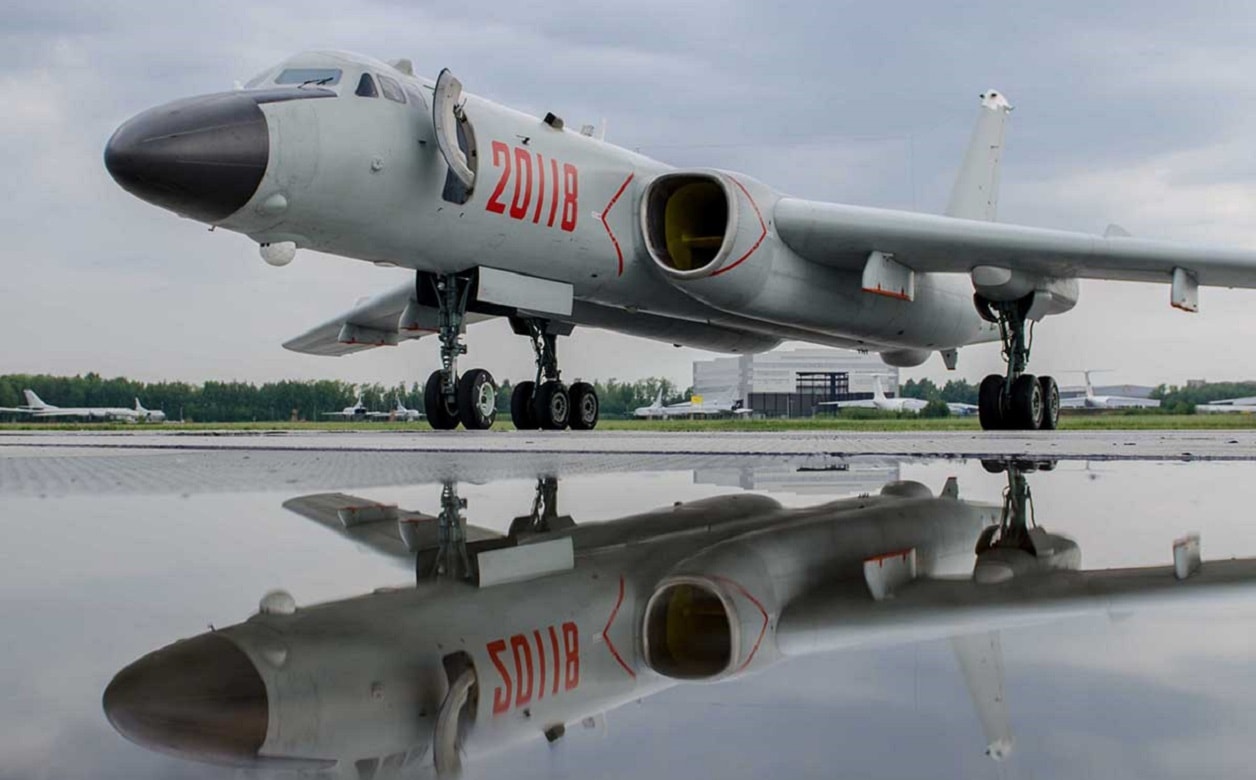The H-6K bomber, a significant asset in the arsenal of the People’s Liberation Army Air Force (PLAAF). This strategic bomber, developed by the Xi’an Aircraft Industrial Corporation, has undergone extensive modifications and upgrades to meet the demands of modern warfare. While not as capable as the B-52 Stratofortress, or even the Tu-95 Bear, the H-6K has its own place in China’s strategic strategy.
H-6K Bomber – China Copies the Tu-16 Badger
The origins of the H-6K can be traced back to the late 1950s when China acquired the license to produce the Soviet Tupolev Tu-16 bomber. The Tu-16, known by its NATO reporting name “Badger,” was a twin-engine jet bomber that first flew in 1952 and became a cornerstone of Soviet strategic aviation. In 1958, China received its first Tu-16 airframes and began local production under the designation H-6.
The initial Chinese-built H-6 bombers were essentially copies of the Tu-16, but over the decades, China has made significant advancements in the design and capabilities of the aircraft. The H-6K, introduced in the early 2000s, represents the most modern and capable variant of the H-6 family.
Building Upon the Old Frame
The H-6K bomber features several key modifications that distinguish it from its predecessors. One of the most notable changes is the replacement of the original Chinese turbojet engines with more powerful and efficient D-30KP-2 turbofan engines. These engines, developed by Russia’s Soloviev Design Bureau, provide greater thrust and fuel efficiency, enhancing the bomber’s range and performance.
The airframe of the H-6K has also been extensively redesigned. The aircraft features larger air intakes, a reconfigured flight deck with modern avionics, and a new nose radome housing advanced radar system. These upgrades improve the bomber’s situational awareness and targeting capabilities.
Another significant modification is the addition of six underwing hardpoints, allowing the H-6K to carry a variety of precision-guided munitions, including air-launched cruise missiles (ALCMs) and anti-ship missiles. This capability significantly enhances the bomber’s versatility and lethality in both strategic and tactical roles.
Capabilities and Armament
The H-6K is designed to perform a range of missions, including strategic bombing, maritime strikes, and long-range precision strikes. Its primary armament includes the CJ-10A ALCM, which has a range of over 1,500 kilometers and can carry both conventional and nuclear warheads. This missile provides the PLAAF with a potent standoff strike capability, allowing it to engage targets from a safe distance.
In addition to the CJ-10A, the H-6K can carry the YJ-12 and YJ-21 anti-ship missiles. The YJ-12 is a supersonic missile capable of reaching speeds of Mach 3, making it a formidable threat to enemy naval vessels. The YJ-21, also known as the Eagle Strike 21, is a hypersonic anti-ship ballistic missile with a range of up to 930 miles and a terminal speed of Mach 10. This missile is designed to penetrate advanced air defenses and deliver a devastating blow to high-value maritime targets.
The H-6K’s advanced avionics suite includes a modern glass cockpit, digital flight control systems, and a comprehensive electronic warfare (EW) suite. These systems enhance the bomber’s survivability in contested environments by providing improved situational awareness, threat detection, and countermeasure capabilities.
The H-6K Bomber has an Important Mission
The H-6K plays a crucial role in China’s military strategy, particularly in the context of the country’s anti-access/area denial (A2/AD) doctrine. This doctrine aims to deter and counter potential adversaries, such as the United States, from projecting power into China’s near seas and airspace. The H-6K’s long-range strike capabilities enable the PLAAF to target critical infrastructure, military bases, and naval assets within the Second Island Chain, which includes key U.S. bases in Guam and the Western Pacific.
As of 2020, the PLAAF operates approximately 231 H-6 bombers, including various variants such as the H-6K and the more recent H-6N. The H-6N is a further evolution of the H-6K, featuring aerial refueling capability and the ability to carry air-launched ballistic missiles (ALBMs). This variant extends the bomber’s operational range and enhances its strategic strike capabilities.
In recent years, the H-6K has been actively involved in military exercises and patrols, demonstrating China’s growing power projection capabilities. For example, in 2024, the Chinese Southern Theater Command Air Force published images of an H-6K carrying four 2PZD-21 hypersonic missiles during a summer exercise. This development indicates that the H-6K can carry more missiles than previously believed, further enhancing its strike potential (whether these hypersonic missiles are as deadly as promised is a different discussion)..
Not a B-52, but Still Deadly
The H-6K bomber was built upon an already aging platform but has been significantly modernized, transforming a Cold War-era design into a modern and versatile platform. With its advanced avionics, powerful engines, and diverse armament options, the H-6K, while aged, is still well-suited to meet the demands of contemporary warfare. Its strategic role in China’s A2/AD doctrine underscores its importance in the country’s military strategy, providing a credible deterrent and a potent offensive capability.
As China continues to modernize its armed forces, the H-6K and its variants will likely remain a key component of the PLAAF’s long-range strike capabilities. The ongoing development and deployment of advanced munitions, such as hypersonic missiles, will further enhance the bomber’s effectiveness, ensuring that it keeps its place in China’s strategic arsenal.
About the Author: Isaac Seitz
Isaac Seitz, a 19FortyFive Defense Columnist, graduated from Patrick Henry College’s Strategic Intelligence and National Security program. He has also studied Russian at Middlebury Language Schools and has worked as an intelligence Analyst in the private sector.

